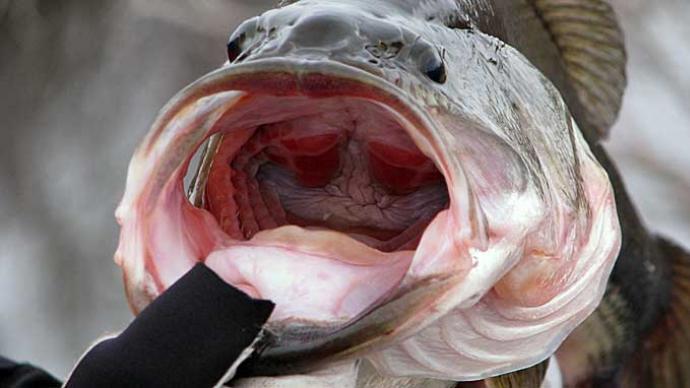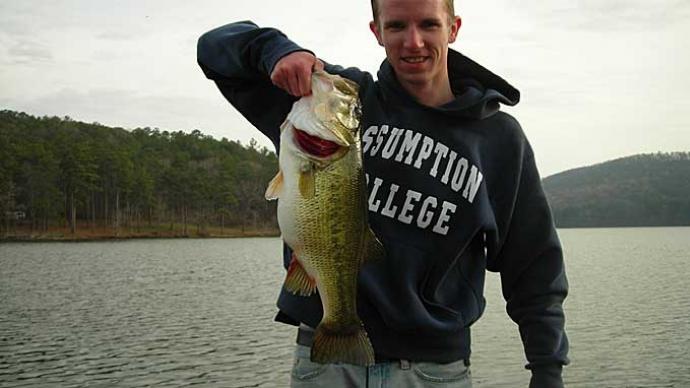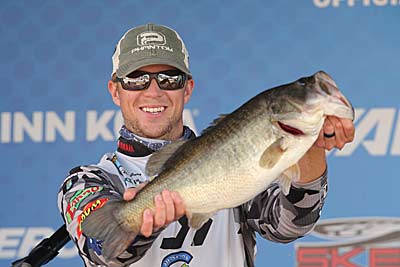
It takes a lot to win at professional bass fishing’s top level. You must sacrifice time at home for days on the road and water, competing and honing skills. There’s a significant financial investment. And you need a few uncontrollable events, such as catching a random big fish or landing one that’s a shake away from escaping, to fall your way.
Bassmaster Elite Series angler Patrick Walters knows that well. The Palmetto State angler won the 2020 Toyota Bassmaster Texas Fest on famous big-fish factory Lake Fork, where he fished jerkbaits on 12-pound test line, catching 5-pounders suspended in standing timber. “That’s not supposed to work,” he said. But it did. “When it’s your time, it’s your time,” he said. “It was an unbelievable experience.”
Walters is no stranger to winning. He has claimed titles in the Carhartt Bassmaster College Series when he was a University of South Carolina student and Bassmaster Opens. While few bass anglers get an opportunity — let alone a regular one — to fish for $100,000 or more, the efficiency and approaches refined by those who do are the real prizes for the rest of us.
Wishing your stars into alignment isn’t a reliable bass-fishing strategy. But nudging them into place by establishing a pattern can be. That approach — defining a set of bass-producing conditions, cover, structure, and technique that can be duplicated — was created by legendary angler and tournament superstar Roland Martin decades ago. Today’s best bass anglers, including Walters, still use patterns to direct them on the water.
To leverage a productive pattern, you first have to identify it. Random casting and location selection may produce one, but a measured approach leads to more and better ones. Whether practicing for a tournament or scouting a new-to-you lake on your day off, applying Walter’s approach to establishing patterns will help you catch more and bigger bass.
Understand your quarry
Each of the three most popular species of freshwater bass — spotted, smallmouth, and largemouth — have their own tendencies. Spotted bass are aggressive, making them the easiest to pattern. “They always eat,” Walters said. “They are feeding machines.” Smallmouth patterns take a bit longer to establish, and largemouth can be easy or challenging, depending on their genetics. He said after the passage of a cold front, for example, Florida-strain ones are almost impossible to catch while Northern-strain ones keep biting.
The differences between those species are matched by some similarities. “All bass focus on three things,” Walters said. First, they do whatever they have to do to survive. If the water level drops, they vacate the shallows to avoid being stranded high and dry. Secondly, their lives revolve around spawning, whether preparing, recuperating, or surviving for the next. And finally, they are constantly chasing their next meal.
Walters said the first two tell him where bass are holding — cover, structure, and depth. The third gives him his tactics, the lures, and presentations that will catch them. For example, if bass are chasing shad in the fall, put away bottom-bouncing lures such as jigs. You’ll want one that darts and flashes higher in the water column, such as a crankbait.
One-two punch
Walters wants to strike a balance between what he thinks bass are doing and what he experiences during tournament practice. The former comes from research, understanding how bass move seasonally and respond to current conditions, and knowing the general characteristics of the water being fished.
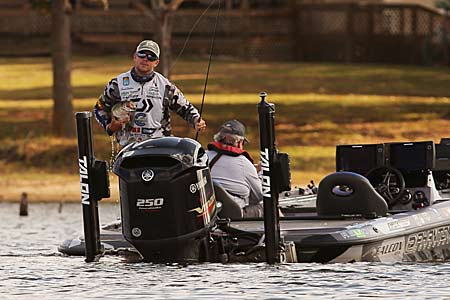
You can add past experiences to the list, especially if they match your current situation. Walters’ Lake Fork winning pattern resembled what he exploited about a week earlier when he finished 10th at a Bassmaster Open on Cherokee Lake, high in eastern Tennessee’s mountains. He also fished for suspended bass around wood, though they were smallmouth, and it was mostly brush and laydowns.
When Walters arrived at Lake Fork, his mind was on working giant swimbaits through its standing timber to catch rogue big bass. Catch Texas Fest’s largest, and you drive home in a new truck; Seth Feider did just that with a 9-pound, 9-ounce giant. He found numbers of quality bass instead. Going into the event, he hoped the pattern would produce about a third of his catch, not all of it. That’s why he always keeps an open mind, too.
While off-the-water research and hypothesized techniques offer a starting point for practice, Walters also wants to see things for himself. That allows him to adjust and formulate new plans once he gets on the water. “About half the time, I throw [my whole plan] out the window,” he said. “You must stay fresh and let the fish direct what you’re doing.”
Walters said some of his best fishing days come during practice. Without worrying about an afternoon weigh-in, he’s willing to fish almost anything. Simply seeing a good-looking dock, stretch of aquatic vegetation, or deep-water point that stretches to the river channel from shore is often enough for him to stop and make a few casts. And sometimes, that innocent move kicks off a pattern.
Cover water
The purpose of Walters’ practice isn’t finding particular spots. His goal is larger. He wants to locate the productive portions of the lake, reservoir, or river he’s fishing. It’s not until the competition begins that he searches out spots. Doing that beforehand wastes time. “There are only two things consistent in fishing,” he said. “Things are going to change. And things are going to break.”
Anglers can’t predict equipment issues, but they can embrace that bass and conditions continually change. And if you know the general region where a bass population resides, it’s easy to adjust your actions to stay with them as they swim spot to spot.
Pay attention to variables such as water clarity and temperature, and weather. Walters said they can quickly change, forcing bass to move in response. In the fall, for example, steady northerly breezes blow microorganisms into spots that face that direction. “That can concentrate baitfish and bass in pockets that may not have had any a day or two before,” he said.
Walters starts his practice, especially if he has never seen the body of water before, by running every inch of it. He wants to see which parts are deep and shallow, the available cover, where the water is clear and dirty, and the number of tributaries. That understanding gives him matching choices when he needs to reproduce a productive pattern elsewhere. He wouldn’t have those options if he dropped the trolling motor at the ramp and started fishing.
Rigged and ready
Fishing your favorite lure all day will work if you’re headed to the lake for sunrises, sunsets, and an occasional bite. But most anglers measure success in numbers and pounds or inches of bass. And while preparing for changing bass puts you ahead of the curve, being ready to serve them the lures they want will keep you there.
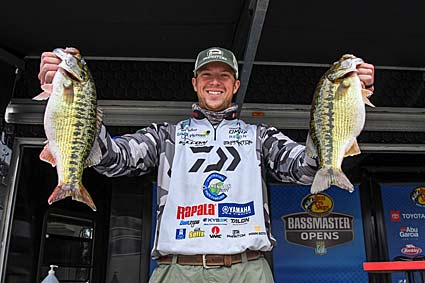
At the Lake Fork tournament, Walters had about a dozen rigged rods ready on his boat’s deck. About half were strung with jerkbaits, each a different style or color, the rest with crankbaits, 1-ounce spinnerbaits, and even a drop shot. The rod locker held more, each prepared with a lure, including a Carolina rig and large and small soft-plastic lures rigged Texas-style that might see action during the day if an opportunity presented itself.
Walters wants to be clear: You don’t need a boat full of rods and reels to be a successful bass angler. But you do need to be prepared to show bass a different lure — profile, action, retrieve, or color — at a moment’s notice. While rigging all those options is an advantage when casting for cash against the clock, taking a moment or two from your Saturday fishing trip to change lures will create the same result.
Change your lure to keep up with conditions. At Lake Fork, for example, Walters started the morning, when light levels were lowest, by fishing jerkbaits sporting opaque colors, such as shad or white, that provided bass an easy target. But later, as the day became brighter, he switched to translucent jerkbaits. Bass could see better, and those created an illusion that they had to bite to investigate.
Walters changes lures about every ten casts during practice. For example, if he comes across a dock, he’ll make a couple of pitches with a jig and then pick up a moving lure such as a buzzbait. “You have to keep them honest,” he said. “You always have to be changing.” That worked for him at Lake Hartwell during a recent Bassmaster Open. He switched to a Zoom Fluke Stick from a Super Fluke on the final day. Its different action and profile tricked enough bass into earning him the win.
Electronics help
Today’s fishing electronics revel what’s happening around and under your boat in amazing detail. Some do that in real-time, and nearly all can pinpoint your exact location on a map. Walters spends much of his practice time looking at them on a sprawling Southeastern impoundment or expansive Great Lake in the North. He said it’s nearly impossible to catch suspended bass without them. And while all that help is irreplaceable, there are times when he only grabs a rod, reel, and lure to build a pattern.
Walters said electronics — besides maybe mapping — aren’t much help in shallow water filled with thick cover, such as the aquatic vegetation in Florida’s lakes and rivers. Even when the water is well-suited to their use, electronics may play only a marginal role. “You can’t always see [the bass on your electronics],” he said. “They can blend in or are too ‘glued’ to the bottom.”
There is some information that electronics are unable to share. Walters said it can be tough to determine the size or species of the fish you see on them. And they can’t always tell the whole story. While a thick line on the screen is the tell-tale sign of a hard bottom, its composition remains unknown. So, he drags a crankbait or jig across it, discovering if it’s sand, rock, or a bass-attracting shell bed, which have proven so productive on Tennessee River reservoirs.


